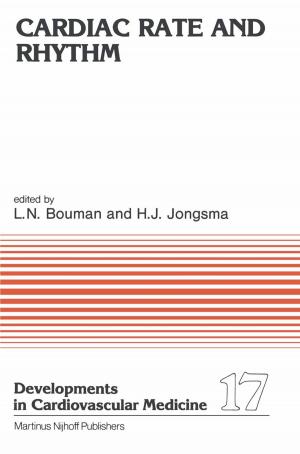The Chaperonopathies
Diseases with Defective Molecular Chaperones
Nonfiction, Science & Nature, Science, Biological Sciences, Biochemistry, Health & Well Being, Medical| Author: | Alberto J.L. Macario, Everly Conway de Macario, Francesco Cappello | ISBN: | 9789400746671 |
| Publisher: | Springer Netherlands | Publication: | April 10, 2013 |
| Imprint: | Springer | Language: | English |
| Author: | Alberto J.L. Macario, Everly Conway de Macario, Francesco Cappello |
| ISBN: | 9789400746671 |
| Publisher: | Springer Netherlands |
| Publication: | April 10, 2013 |
| Imprint: | Springer |
| Language: | English |
This Brief provides a concise review of chaperonopathies, i.e., diseases in which molecular chaperones play an etiologic-pathogenic role. Introductory chapters deal with the chaperoning system and chaperoning teams and networks, HSP-chaperone subpopulations, the locations and functions of chaperones, and chaperone genes in humans. Other chapters present the chaperonopathies in general, including their molecular features and mechanistic classification into by defect, excess, or mistake. Subsequent chapters discuss the chaperonopathies in more detail, focusing on their distinctive characteristics: primary or secondary; quantitative and/or qualitative; structural and hereditary or acquired; genetic polymorphisms; gene dysregulation; age-related; associated with cancer, chronic inflammatory conditions, and autoimmune diseases. The interconnections between the chaperoning and the immune systems in cancer development, chronic inflammation, autoimmunity, and ageing are outlined, which leads to a discussion on the future prospects of chaperonotherapy. The latter may consist of chaperone gene and protein replacement/supplementation in cases of deficiency and of gene or protein blocking when the chaperone actively promotes disease. The last chapter presents the extracellular chaperones and details on how the chaperone Hsp60 is secreted into the extracellular space and, thus, appears in the blood of cancer patients with potential to participate in carcinogenesis and chronic inflammation and autoimmunity. Chaperones as clinically useful biomarkers are mentioned when pertinent. Likewise, guidelines for clinical evaluation of chaperonopathies and for their histopathological and molecular identification are provided throughout. The book also provides extensive bibliography organized by chapter and topic with comments.
This Brief provides a concise review of chaperonopathies, i.e., diseases in which molecular chaperones play an etiologic-pathogenic role. Introductory chapters deal with the chaperoning system and chaperoning teams and networks, HSP-chaperone subpopulations, the locations and functions of chaperones, and chaperone genes in humans. Other chapters present the chaperonopathies in general, including their molecular features and mechanistic classification into by defect, excess, or mistake. Subsequent chapters discuss the chaperonopathies in more detail, focusing on their distinctive characteristics: primary or secondary; quantitative and/or qualitative; structural and hereditary or acquired; genetic polymorphisms; gene dysregulation; age-related; associated with cancer, chronic inflammatory conditions, and autoimmune diseases. The interconnections between the chaperoning and the immune systems in cancer development, chronic inflammation, autoimmunity, and ageing are outlined, which leads to a discussion on the future prospects of chaperonotherapy. The latter may consist of chaperone gene and protein replacement/supplementation in cases of deficiency and of gene or protein blocking when the chaperone actively promotes disease. The last chapter presents the extracellular chaperones and details on how the chaperone Hsp60 is secreted into the extracellular space and, thus, appears in the blood of cancer patients with potential to participate in carcinogenesis and chronic inflammation and autoimmunity. Chaperones as clinically useful biomarkers are mentioned when pertinent. Likewise, guidelines for clinical evaluation of chaperonopathies and for their histopathological and molecular identification are provided throughout. The book also provides extensive bibliography organized by chapter and topic with comments.















